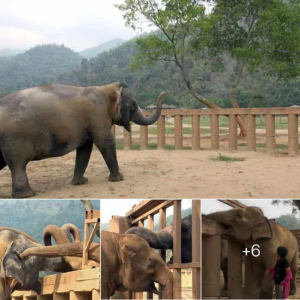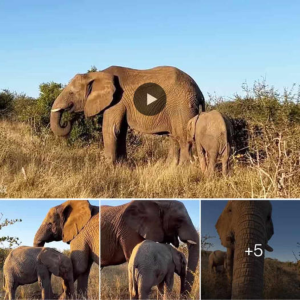Different cultures have different relationships to death as well as various rituals that hold unique spiritual meanings, but one of the most fascinating is the Igorot peoples’ hanging-coffin ‘burial’ in Sagada, Philippines. From the “death chair” that precedes it to the way the coffins are made and suspended up high, it’s an endlessly interesting end-of-life rite. This ancient tradition, which defies conventional burial norms, offers a glimpse into the rich cultural tapestry of the Igorot communities. Let’s unravel the enigmatic allure of the hanging coffin burials in Sagada.

The Igorot people and culture hanging coffins
The Igorot people are indigenous tribes inhabiting the mountainous regions of Luzon, the largest island in the Philippines. They are known for their rich cultural heritage, which includes a strong connection to their ancestors, a deep respect for nature, and an unusual belief system. The Igorot people have a long and colourful history, dating back thousands of years. Throughout this time, they have developed a distinct way of life, deeply intertwined with the rugged landscape they call home. Hanging Coffins – this sacred burial rite is also a part of the people’s rich historical, spiritual, and cultural heritage.

Why the coffins in Sagada are hanging ?
The decision to hang coffins in Sagada is a multifaceted one, influenced by spiritual beliefs, practical considerations, and cultural traditions. It represents a harmonious blend of reverence for the departed, respect for nature, and preservation of cultural heritage within the Igorot communities.

Spiritual Beliefs
The Igorot peoples of Sagada hold deep spiritual beliefs regarding death and the afterlife. They believe that placing the deceased in elevated locations helps facilitate their journey to the spirit world. Hanging the coffins high above the ground symbolizes the ascent of the soul to higher realms, ensuring a peaceful transition for the departed.
Protection from Predators
Sagada’s mountainous terrain is home to various wildlife and scavengers. By hanging the coffins on cliffsides, the Igorot communities protect the remains of their loved ones from being disturbed or desecrated by animals. This ensures the preservation of the deceased’s dignity and respect even after death.

Environmental Considerations
The rugged landscape of Sagada poses challenges for traditional burial practices. The soil may be rocky or unsuitable for digging graves, and heavy rainfall can lead to erosion and soil instability. Hanging coffins circumvent these challenges, providing a practical solution for burial while minimizing environmental impact.
Cultural Tradition
Hanging coffin burials have been a longstanding tradition among the Igorot peoples, passed down through generations. The practice is deeply ingrained in their cultural identity and serves as a symbol of their resilience, reverence for nature, and connection to their ancestors. It is a tradition that has endured for centuries, reflecting the values and beliefs of the community.

How did the burying tradition look like ?
The preparation begins long before death, as elderly individuals in the community take it upon themselves to carve their own coffins as a symbolic acceptance of their mortality. Should age or illness prevent them from doing so, family members step in to craft the coffin on their behalf. This act of familial dedication underscores the significance of the impending transition and honors the cycle of life and death within Igorot culture.
Once the coffin is prepared, attention turns to the challenging task of positioning it on the steep cliffsides of Sagada. A wooden construction is erected to provide access for individuals to ascend and securely affix the coffin to the cliff. This construction not only serves a practical purpose but also symbolizes the collective effort of the community in honoring the deceased.

A poignant aspect of this tradition is the presence of a chair placed near some coffins. After death, the deceased is seated on this chair, bound and covered with blankets, before being transported to the burial site. This ritualistic act signifies respect for the departed and symbolizes their peaceful transition to the afterlife within the embrace of their community.
Upon the individual’s passing, their body is carefully placed in the coffin in a fetal position, mirroring their entry into the world. To delay decomposition and mask the odor of decay, the body is often subjected to smoking, a practice rooted in ancient cultural beliefs.

The funeral procession to the cliffside burial site is a solemn affair, with mourners paying their respects to the departed and participating in symbolic rituals. During this procession, mourners attempt to touch or carry the corpse, believing that contact with the deceased’s blood will bring good fortune and impart beneficial skills and attributes.
Upon reaching the chosen burial site, the coffin is reverently placed on the cliffside and secured in place, marking the culmination of the ritual. It is said that certain criteria must be met for an individual to receive this esteemed funerary practice, including being a full-blooded Igorot, having attained grandparent status, being married, and having passed away from natural causes.

The hanging coffin burials of the Igorot peoples in Sagada, Philippines, epitomize the intersection of tradition, spirituality, and reverence for nature. This ancient custom, steeped in symbolism and ritual, offers a profound insight into the Igorot culture and their enduring connection to the land. As visitors gaze upon the suspended coffins against the backdrop of majestic mountains, they bear witness to a timeless tradition that transcends generations and captivates the imagination.





